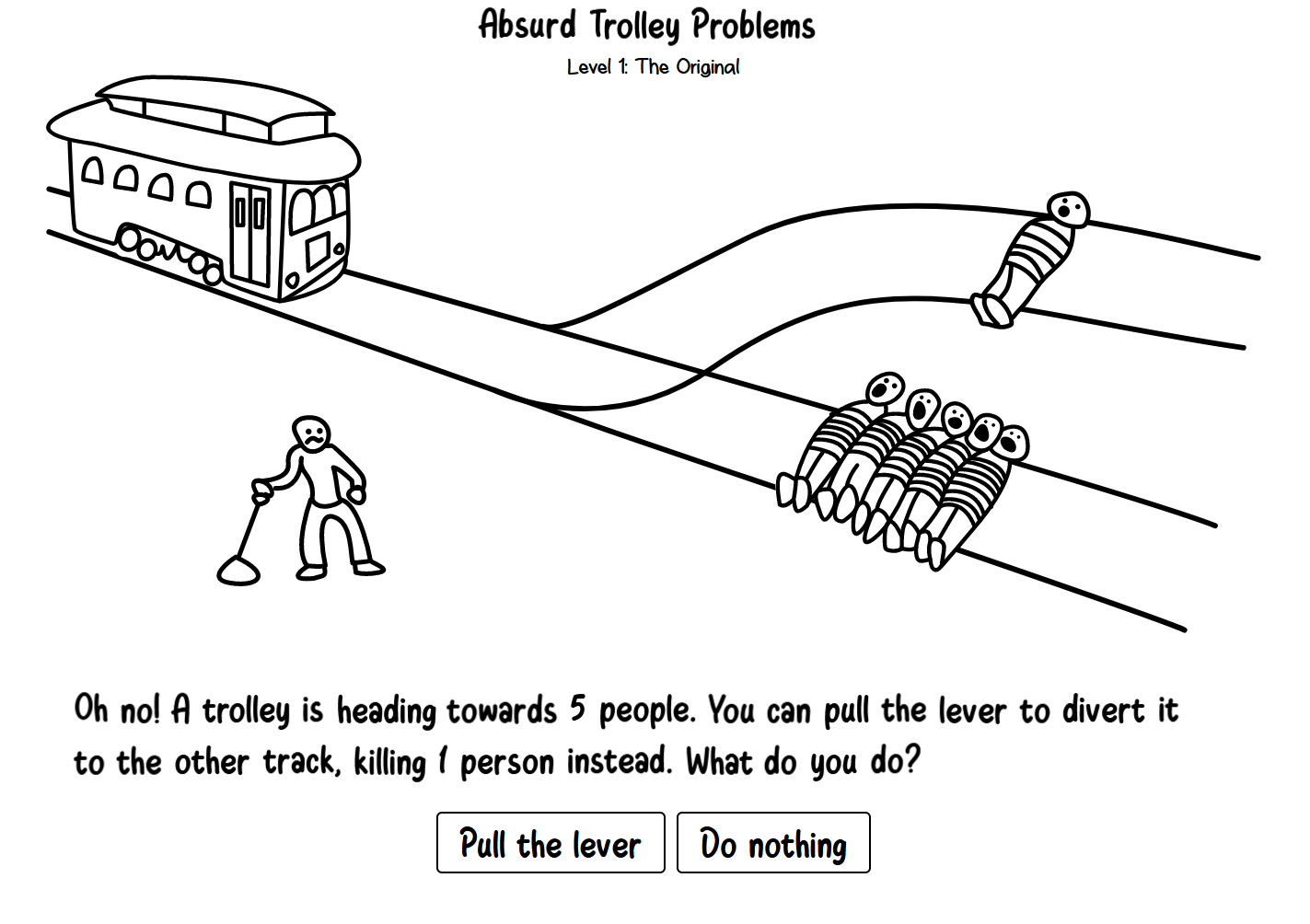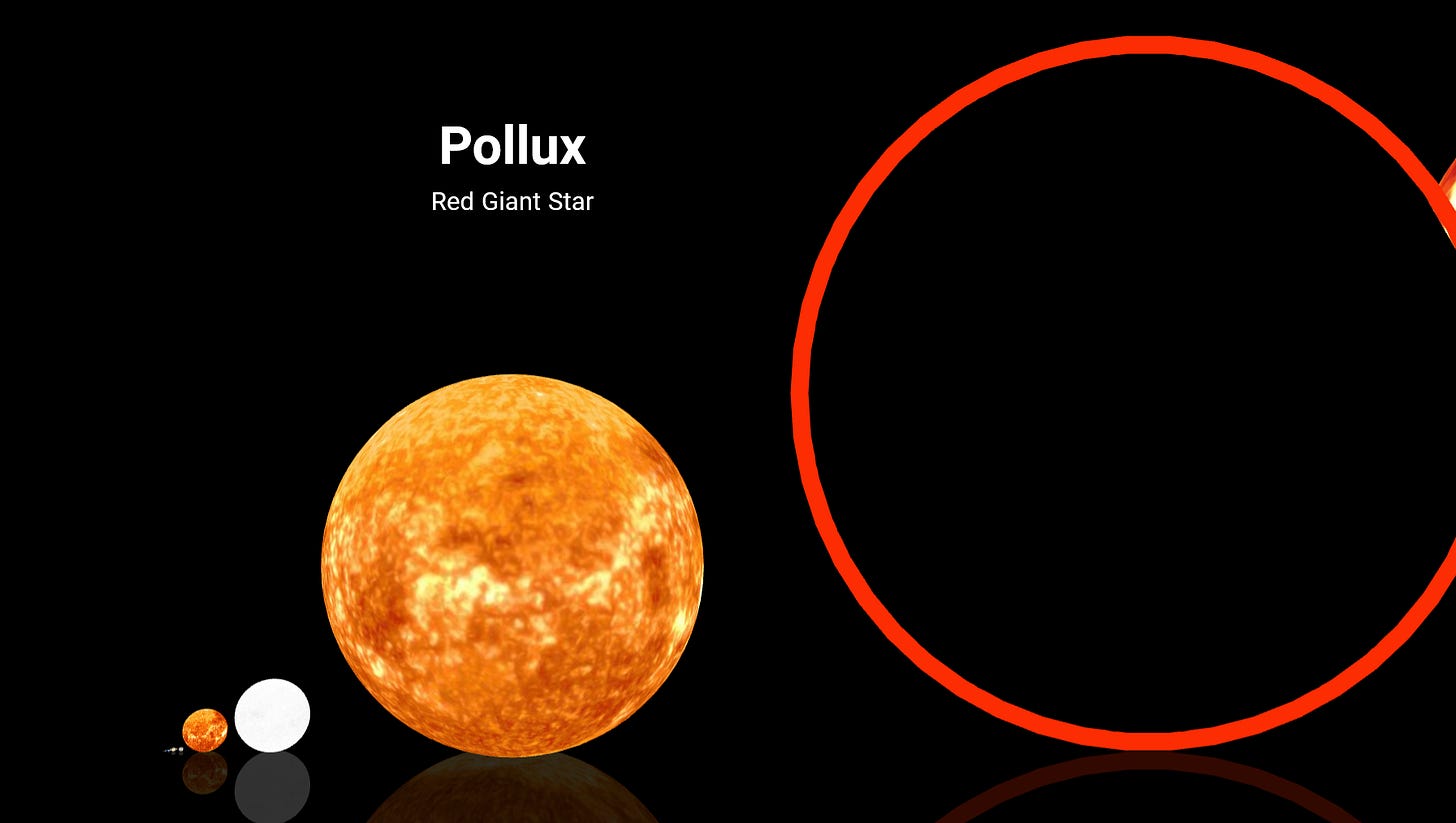Clang-Clang-Clang Went the Planet
Asteroids, Trolleys, Galaxies, & Babies

Thanks to a coder with sundry interests, a fine sense of humor, and keen graphics skills, you can spend New Year’s Day (and everyday thereafter) dropping assorted asteroids all over the Earth and counting the number of people vaporized, crushed, and burned. You can help Grover Cleveland’s granddaughter squash people to death on trolley tracks. You can see how you match up in size versus a shocking range of astronomical objects. Or, if you’re in a more bucolic mood, you can sit passively and watch the real-time births of hundreds of children, all over the planet. Those are just four of the bizarre and really entertaining activities available on Neal Agarwal’s website, neal.fun.
Asteroid Launcher: Earth-shattering Kaboom
Go to Agarwal’s website and click on “Asteroid Launcher” and begin bombarding Earth with the asteroids of your choice. A nice little dashboard lets you specify five different parameters:
Type of asteroid: iron, stone, carbon, comet, or gold
Diameter: from 3 feet to 1 mile
Speed: 1,000 mph to 250,000 mph
Impact angle: 5° to 90°
Location: anywhere on Earth
Hit “LAUNCH ASTEROID” and rain down destruction on some portion of our fragile planet. I decide to strike Earth with an iron asteroid, 1,500 feet in diameter, at 80,000 mph, striking at a 60° angle. My home is in Alexandria, Virginia, and I set the simulator to drop the asteroid on Baltimore, Maryland, 40 miles away as the crow flies.
BOOM!!! — ends any plans for a sequel to The Wire, since Jimmy McNulty and Slim Charles were among the 258,713 people vaporized in the formation of an 8.7-mile-wide, 2,134-foor-deep crater—producing more energy than mankind consumes in a year. As you can see from the map, I’m far away from the crater, but it’s still not my lucky day. I probably won’t be among the 4,500,000 dead from the 14-mile-wide fireball, but my clothes will still catch fire, as will trees up to 120 miles from ground zero. I won’t hear the crackling fire, though, as the shockwave will rupture my eardrums—assuming the shockwave hasn’t yet collapsed my house. But, never mind, the shockwave probably won’t even reach me before the 9,060 mph winds arrive 16 seconds after the strike. A strike like this is expected every 427,000 years. NASA has just begun testing whether missiles and warheads might be able to deflect an oncoming asteroid.
Absurd Trolley Problems: Foot on the Pedal
Philippa Foot was a professor of philosophy who devised the celebrated trolley problem; she was also the granddaughter of President Grover Cleveland. In the trolley problem, one must make horrifying moral choices, all based around a runaway trolley. Start neal.fun’s “Absurd Trolley Problems” The original specification is shown in the graphic above. If the switchman does nothing, five people will be run over and killed. If he pulls the switch, the trolley will head off onto a siding and kill a bystander who is not currently in danger. What should the switchman do? Of the 2.8 million players who have entered their choice, 73% would divert the trolley and kill the bystander, presumably because 5 lives trump 1 life. But 27% would not, presumably because it’s immoral to kill someone (the bystander) for the benefit of others.
From there, Foot and others added complication. Suppose you know the fellow lying on the siding? Suppose the 5 were part of a suicide pact, whereas the 1 merely fell by accident? Suppose the 5 are elderly and the 1 is young? Agarwal’s game carries you though case after case. (My favorite was one that resembles the picture above—except that instead of one person lying on the second track, it’s Leonardo’s “The Mona Lisa” lying there.)
The trolley problem has become a favorite of professors of law, philosophy, ethics, economics, and so forth. The accident-avoidance software of autonomous cars must have versions of the Trolley Problem built into their software. If an accident is unavoidable, do you want to hit the oncoming bus filled with nuns or the lone schoolchild standing on the corner?
I can’t mention the Trolley Problem without offering a link to the best cinematic Trolley Problem representation ever. TV’s The Good Place is the story of a group of oddballs in the afterlife, which is a sort of bland, mildly pleasant suburban town. Chidi Anagonye (William Jackson Harper) is a deceased professor of ethics and moral philosophy and, knowing the ambiguities of ethics, is generally incapable of making up his mind on anything. Eleanor Shellstrop (Kristen Bell) is a friend or, at times, girlfriend, who is often the show’s tart-tongued Greek chorus, issuing opinions from the sidelines on all that occurring. Michael (Ted Danson) is a supernatural being who is the afterlife’s “architect” and who possesses extraordinary powers. Season 2, Episode 6 is called “The Trolley Problem.” In it, Michael forces Chidi to actually live the Trolley Problem over and over and over, with the ramification of each choice horrifyingly visible after each iteration. Here’s the crucial scene:
The Size of Space (Spoiler: Really Big)
There are no choices to make here. Just swipe right repeatedly as we go from an astronaut to the Hubble telescope to the shuttle, and on and on and on through asteroids, planets, stars, supernovas, galaxies, galactic clusters, and, eventually, the entire universe. The picture here centers on the red giant Pollux. To the right is Sagittarius A*—a supermassive black hole. Heading leftward from Pollux is Sirius A, our own Sun, and dots representing Jupiter and other planets.
Baby Map: Busy Stork
This game is entirely passive, so you can enjoy it as you would a lava lamp. Here, I opened the link and just watched countries blink on and off as children were born. In the moment this screenshot was taken, three hypothetical children were born in China, India, and Egypt. From the time I began the simulation to the moment of the screenshot, India flashed 22 times, China 11 times, Nigeria 5 times, Pakistan 3 times, and so forth for other countries lower on the list. Watching for a few minutes, you get a good sense of which countries have huge populations and of which countries have high or low birthrates.
Other Games
In all, there are 27 games. Beyond the four described above, you can design the next iPhone, give Yelp-style reviews to Earth, produce weird combinations of ambient sounds (e.g., dental office-cum-coffee shop in a train station), play with rocks, forecast events from now till the end of time, see what lives at which level in the ocean, and try to spend all of Bill Gates’ money.
Warning!!!
One might say that neal.fun is “not suitable for work.” There’s nothing obscene or hurtful—nothing that would get you sent to Human Resources’ re-education camp. Nothing you can’t show to a Sunday School class. By “not suitable for work,” I meant that once you discover the site, you won’t be getting any more actual work done.







There's another interesting perspective to the Baby Map "game":
This contrasts countries where having children is the only possible means for billions of people to raise "net worth" and "capital," and hence hopes of being cared for in your old age, versus countries where bearing children is seen by too many as "a blight upon the planet."